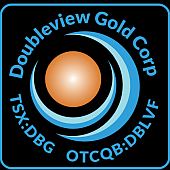 Appia grab samples up to 3.94% TREO at Alces
Appia grab samples up to 3.94% TREO at Alces
2021-09-01 09:20 ET – News Release
Mr. Tom Drivas reports
APPIA ANNOUNCES ASSAY RESULTS, ADDITIONAL LAND ACQUISITIONS, A NEW DISCOVERY AND DRILLING UPDATE
Appia Energy Corp. has released preliminary exploration results and provide an update regarding the company’s comprehensive drilling program to expand and confirm the extent of the estimated high-grade mineralization of rare earth elements (REE) and gallium on the 100-per-cent-owned Alces Lake project, Athabasca basin area, Northern Saskatchewan.
Alces Lake high-grade REE project
Diamond drilling continues with two drills active on the property. Initial drilling has been completed at Biotite Lake and is continuing at the WRCB zones (cumulatively the Wilson-Richard-Charles-Bell and Ivan-Dylan-Dante discoveries). Analyses from the grab and channel samples have been received and have confirmed target area potential for drilling and the company has made a new discovery at Diablo in the Western Anomaly area. Notable results also include:
- Grab samples from the Oldman River prospect confirm REE mineralization over an approximate 175-metre strike length, with assays returning up to 3.94 per cent total rare earth oxides (TREO);
- Channel sampling results include 6.23 per cent TREO over 1.69 metres at Danny, 2.84 per cent TREO over 3.09 metres at Ermacre, 1.01 per cent TREO over 7.69 metres at Biotite Lake and 2.16 per cent TREO over 1.68 metres at the newly-discovered Strocen zone;
- Two drills are currently active on the property. One drill is dedicated to the WRCB zones, while the other moves across the block, targeting the best prospects on an ever-growing list of previously undrilled and newly discovered targets. Total metreage could exceed 10,000 metres;
- Acquisition of a further 11,055.4 hectares (27,318.5 acres) of land contiguous to the claim block at Alces Lake, increasing the 100-per-cent-owned landholdings to 35,682.2 hectares (88,172.7 acres), doubling the landholdings from the start of the 2021 exploration season;
- Revision of the drilling schedule to accelerate the drilling at highly prospective areas including Oldman River and Sweet Chili Heat.
Assay results
Assay results from samples collected during the first phase of field exploration have been returned from the Saskatchewan Research Council’s Geoanalytical Laboratory in Saskatoon. Grab samples from the Oldman River area define a trend of approximately 175 metres in length, with grades ranging from 0.52 per cent up to 3.94 per cent TREO. Mineralization is hosted within a series of biotite-rich shear zones, with orientations that are axial-planar to folding in the area.
Channel sampling was conducted at the Ermacre, Danny, Biotite Lake and Strocen zones. Composite results from these samples are shown in the associated table, with significant TREO grades ranging from 0.20 per cent up to 6.23 per cent.
New channel samples have been taken from Sweet Chili Heat, Diablo, Cool Ranch, Buffalo, Roulette and the HH zone to test the potential of the area. These channel samples have been submitted for analysis along with other samples from drilling and exploration.
Diamond drilling
Approximately 7,200 metres of drilling has been planned to test the near-surface and down-plunge extents of new and existing rare-earth targets and total metreage could exceed 10,000 metres. More than 4,000 metres is dedicated to identifying the depth potential of the WRCB zones and help complete the understanding of this significant discovery.
Preliminary drilling at Biotite Lake is complete, with metreage totalling 695 metres. This drill has moved to the Danny zone, with 345 metres of planned drilling. Metreage at WRCB has totalled 1,085 metres, with approximately 3,400 metres remaining on the first phase of drilling. Assay results are currently pending and will be analyzed to determine further drilling requirements. Industry conditions had delayed the drilling schedule, but drilling is now on pace with previous forecasts.
The Sweet Chili Heat zone (SCH), among others, is a new discovery that was found as a direct result of the new airborne survey. As a result of the analysis of the geophysical data and geologic work done at the location, the SCH zone has been prioritized for drilling in the near future. Monazite mineralization has an exposed strike length of approximately 25 metres, with elevated radiation readings continuing underground cover for an additional approximately 30 metres. Observed mineralization indicates that the SCH is a highly prospective target.
Nicolas Guest, Alces Lake project manager, noted that: “Drilling is now progressing well. We have been adding holes to follow up on promising intercepts and eagerly await the results from Biotite Lake and WRCB. Our target inventory has been growing steadily, as field teams continue to generate new areas of interest.”
New discoveries
The Western Anomaly has yielded additional new discoveries, including the Diablo zone which comprises a feldspathic pegmatite, containing irregular patches of massive biotite, quartz and monazite. The area has been channel sampled, with assays currently pending. The Diablo zone is on the margin of a northeast-southwest-trending shear zone and hosted within a similarly trending, steeply plunging fold. Shearing is axial planar to folding, which is consistent with numerous occurrences across the property.
Mr. Guest, Alces Lake project manager, noted that: “The latest discoveries in the Western Anomaly continue to demonstrate its great potential. The area is hosted within a regional isoclinal fold, with well-developed axial planar shear zones. We are excited about the exploration potential of these prospective trends and look forward to our upcoming drilling in the area starting in September.”
All lithogeochemical assay results were provided by Saskatchewan Research Council’s Geoanalytical Laboratory, an ISO/IEC 17025:2005 (CAN-P-4E) certified laboratory in Saskatoon, Sask. All analytical results reported herein have passed internal quality assurance/quality control review and compilation.
The company is fully financed for the 2021 program and all required permits for the exploration activities are in-hand.
With the largest exploration and diamond drilling program in the company’s history now under way, exploration results will be released as received and analyzed by the company. Analysis of the summer exploration and drilling program will follow and may lead to the preparation of an NI 43-101 (technical report with 3-D geophysical-geological models and preliminary economic assessment) report expected near the end of 2021. The Alces Lake project encompasses some of the highest-grade total and critical* REEs and gallium mineralization in the world, hosted within a number of surface and near-surface monazite occurrences that remain open at depth and along strike.
The Alces Lake project is located in Northern Saskatchewan, the same provincial jurisdiction that is developing a “first-of-its-kind” rare earth processing facility in Canada (currently under construction by the Saskatchewan Research Council, it is scheduled to become operational in early 2023). The Alces Lake project area is 35,682.2 hectares (88,172.7 acres) in size and is 100-per-cent-owned by Appia.
To ensure safe work conditions are met for the work force, the company has developed exploration guidelines that comply with the Saskatchewan public health orders and the public health order respecting the Northern Saskatchewan administration district in order to maintain social distancing and help prevent the transmission of COVID-19.
*Critical rare earth elements are defined here as those that are in short-supply and high-demand for use in permanent magnets and modern electronic applications such as electric vehicles and wind turbines (i.e.: neodymium (Nd), praseodymium (Pr), dysprosium (Dy) and terbium (Tb)).
About Appia Energy Corp.
Appia is a Canadian publicly listed company in the uranium and rare earth element sectors. The company is currently focusing on delineating high-grade critical rare-earth elements, gallium and uranium on the Alces Lake property, as well as exploring for high-grade uranium in the prolific Athabasca basin on its Loranger, North Wollaston and Eastside properties. The company holds the surface rights to exploration for 83,706 hectares (206,842 acres) in Saskatchewan. The company also has a 100-per-cent interest in 12,545 hectares (31,000 acres), with rare earth element and uranium deposits over five mineralized zones in the Elliot Lake camp, Ontario.
Appia has 107.6 million common shares outstanding and 128.1 million shares fully diluted.
We seek Safe Harbor.

























